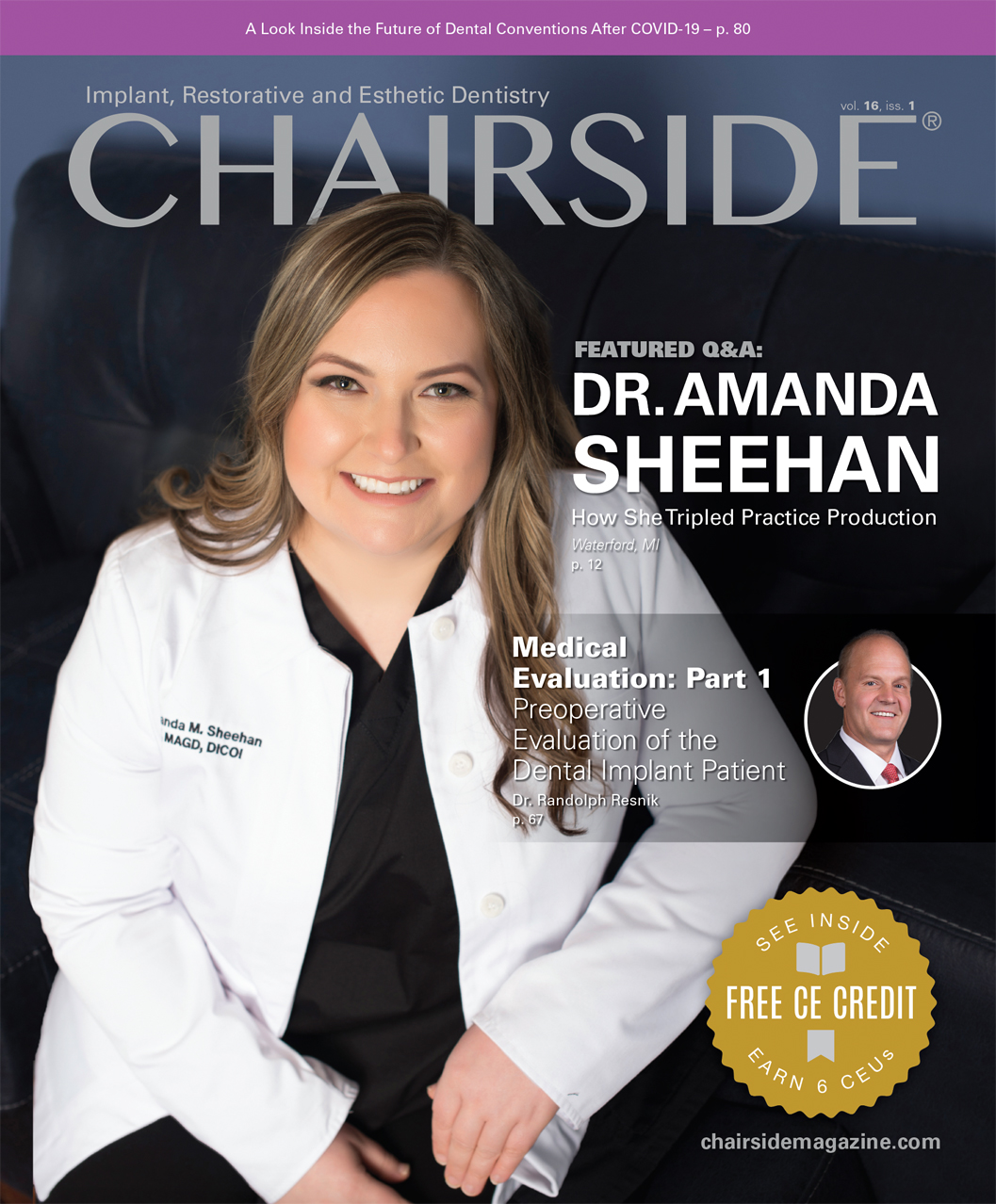My First Glidewell HT™ Implant

Note: The Hahn Tapered Implant System is now known as the Glidewell HT Implant System
Dr. John Nosti is a general dentist based in Mays Landing, New Jersey, who recently completed the surgical continuum at the renowned Misch International Implant Institute. In this interview, he explains how offering implant placement and restoration under one roof has benefited his patients as well as his practice, shares his experience placing Hahn™ Tapered Implants, and recounts how his restorative expertise recently earned him an invitation to teach at the Misch Institute.
CHAIRSIDE® MAGAZINE: To start, can you talk about what inspired you to learn how to place implants?
DR. JOHN NOSTI: I’ve been placing implants for about a year, though I’ve been restoring them for close to 20. For the longest time, I was very comfortable with the prosthetic aspect of implants. I work with a good team of surgeons who refer implant patients to me for the restoration. In my area I’ve been known as the go-to for reconstructive dentistry, especially involving implants.
As time passed, there were instances where I knew I lost patients who chose to go to another office because they could get the implant placed and restored under one roof. Also, when you refer patients to a specialist, they sometimes don’t follow through on treatment or choose to go somewhere else. It got to a point where I was quite knowledgeable in the prosthetic aspect of implantology and decided that I should acquire the surgical skills to place implants. I wanted to have control of the situation from treatment planning to execution and provide patients with the predictable result I know I can achieve when the implant is placed in the optimal position for the restoration.
CM: Where did you first learn to place implants?
JN: I had accrued countless CE hours in implants, so it would be hard to pinpoint the first surgical course I took. However, the first course that made me comfortable was the Misch Institute continuum. I actually took prosthetic courses at the institute back in 2006, so that was my introduction to the institute. Although I didn’t decide to start placing implants at that time, learning from Dr. Carl Misch had a huge influence on me. His rationale, theories and principles made the most sense regarding the placement and restoration of implants. The first time I saw Carl speak, his description of the engineering aspects and the prosthetic rationale behind implantology really resonated with me. He helped marry my previous knowledge of cosmetic and reconstructive dentistry with implantology to where it just made sense.
CM: So you recently returned to the institute to take the surgical continuum?
JN: Yes. In 2019 I went back and I did the entire surgical continuum, including the five main courses and two adjunct courses. I also took part in the prosthetic course to see what changes had been made since 2006.
CM: And once you had completed that continuum, that’s the point where you felt confident enough to add surgical implant placement to your practice?
JN: I actually started placing implants while I was doing the continuum. I felt that confident. It was after my third course. They teach you proven techniques and protocols on how to handle any issue, so that if you don’t have ideal conditions, you know how to prevent complications, which gives your confidence a huge boost. At the Misch Intitute, I was taught a very tried-and-true process of placing implants that gave me the ability to perform surgery in a way where it has already become very routine and predictable in my practice.
CM: We take great pride in the fact that the Hahn™ Tapered Implant (Glidewell; Irvine, Calif.) continues to serve as the official implant system of the Misch Institute. Can you talk about your experience with the implant and whether you’re now using it in your practice?
JN: Yes, I worked with the Hahn implant system during the hands-on exercises of the surgical continuum and had a really great experience. I chose to use it in my practice because the implant offers numerous advantages. The aggressive thread design is one of my favorite features and really helps achieve the high primary stability you like to see when you place an implant. The machined collar gives you the ability to position the implant level with the bone, slightly above the bone or even slightly below the bone, and I appreciate having that flexibility. Everything from the sizes the implant system offers to the simple surgical protocol made it the obvious choice when I got started placing implants.
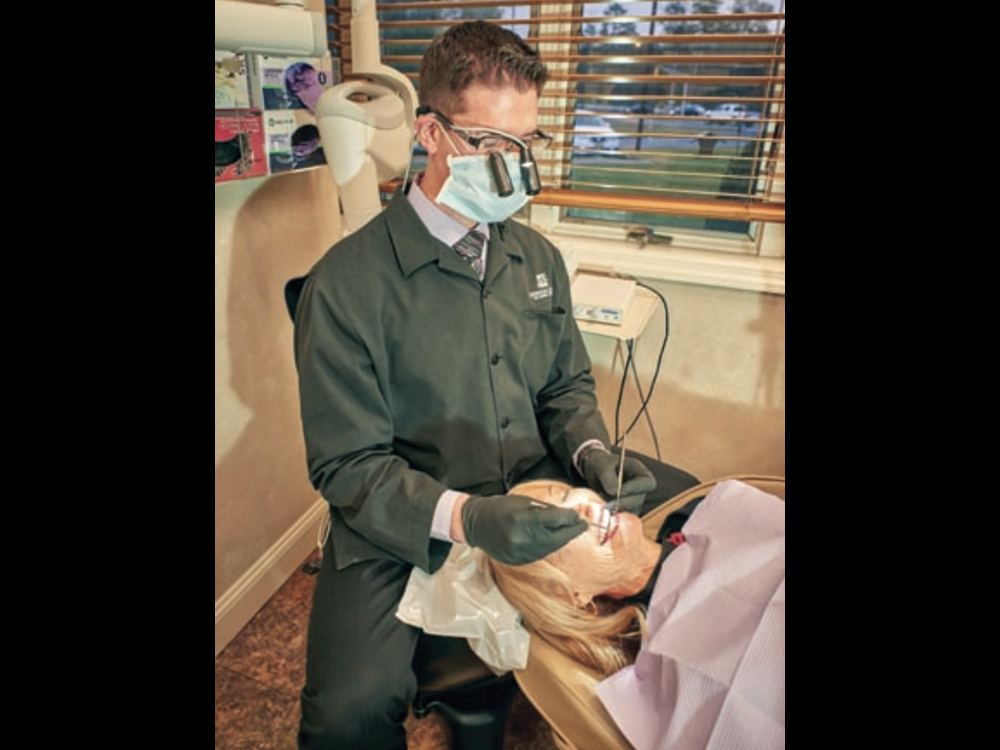
Dr. John Nosti has offered his patients restorative implant services for nearly two decades and has seen many patients neglect to follow through on treatment after being referred out for implant surgery. After recently adding implant placement to the services he offers at his practice, he has found that far more patients are now willing and able to accept treatment.
JN: Yes, I worked with the Hahn implant system during the hands-on exercises of the surgical continuum and had a really great experience. I chose to use it in my practice because the implant offers numerous advantages. The aggressive thread design is one of my favorite features and really helps achieve the high primary stability you like to see when you place an implant. The machined collar gives you the ability to position the implant level with the bone, slightly above the bone or even slightly below the bone, and I appreciate having that flexibility. Everything from the sizes the implant system offers to the simple surgical protocol made it the obvious choice when I got started placing implants.
CM: How did things go the first time you placed implants in your practice? What kind of case was it?
JN: Everything went very smoothly. This was a patient who had a lower 3-unit bridge on her right side that had failed a few years prior after the premolar root fractured and the second molar developed caries. These were previously endodontically treated teeth. I removed the teeth and grafted the extraction sockets for implant placement. On the left side of the patient’s mandible, she’d had an edentulous span in the posterior for quite a while and had never done anything about it because — and most dentists have heard this story before — she had one good side to chew on.
I explained that the best option was to place implants on both sides of the arch, and that I was taking some training. I told her: “We’ll give the bone some time to heal, and we’ll see where I am with my implant knowledge in three or four months. I’ll either feel comfortable enough to place your implants, or I’ll refer you to a surgeon and I’ll still restore them.” She was really happy with that approach. When she came back and asked if we were doing this together, I said, “Absolutely.” The surgical continuum at the Misch Institute had really helped build my confidence and I was ready.
We took X-rays and CBCT scans, and there was plenty of bone to place the implants. I had a surgical guide made. I laid a flap, created the osteotomies and placed the implants through the guide. Everything went seamlessly and just as I expected. Ironically, the part that was surprising to me was that one of the implants got more stability than I was expecting. I started with her first two implants for the right side of the arch — where she’d had the 3-unit bridge fail — and placed them using the handpiece. Then I get to the site in the area of the most distal molar and the handpiece torqued out on me. This didn’t happen in the course, so I had to sit there and think for a second. The torque wrench goes up to the same Ncm, but then I remembered that there’s a straight wrench with no torque limit on it. So it was a slight pause in the surgery, but it was a great thing to happen because the primary stability I achieved was even better than what I could have expected. It was fantastic. Then I placed the two implants in the area of teeth #19 and #20, and that went perfectly.
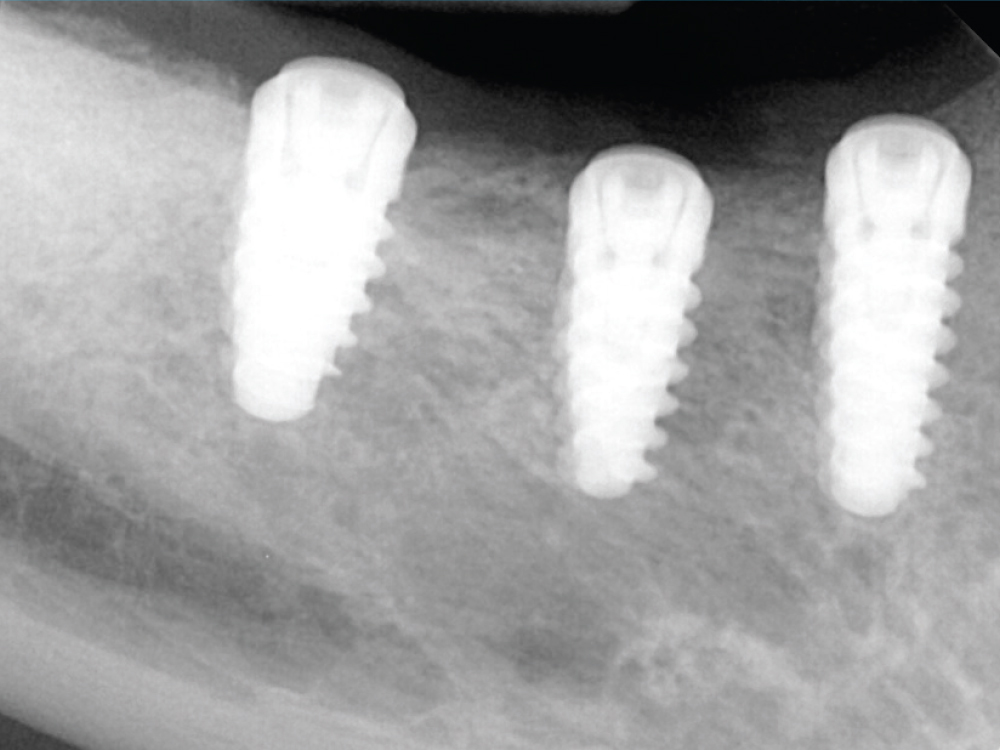

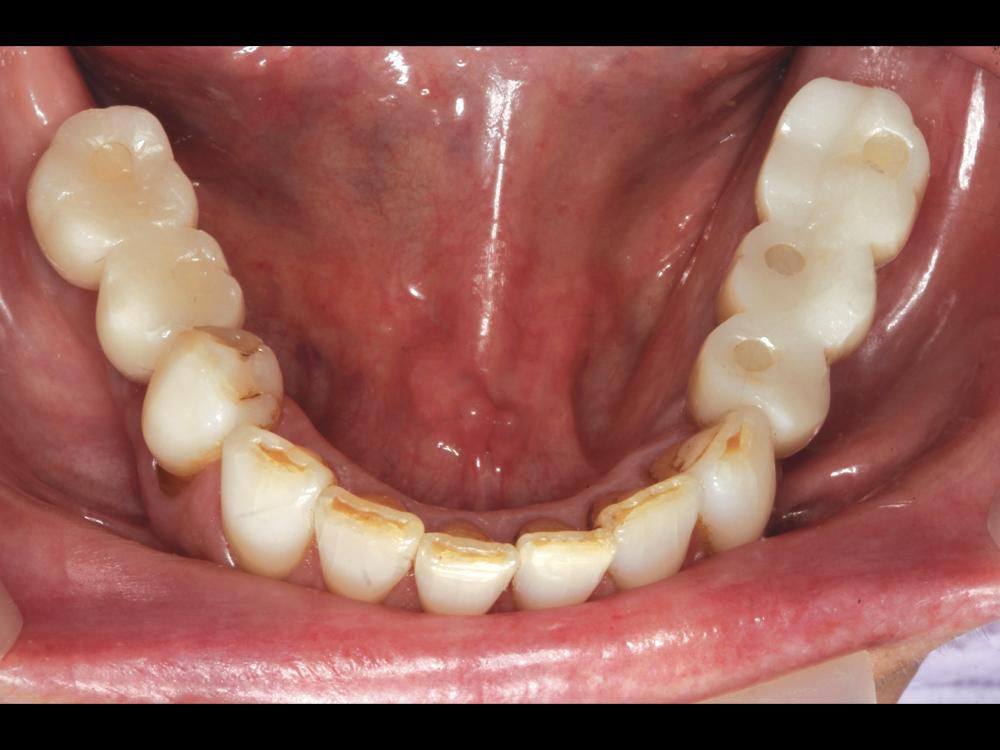
For his first implant surgery, Dr. Nosti placed five Hahn implants in the posterior mandible for a patient who was especially eager to have him complete the entire process, from implant placement to the final screw-retained restorations.
CM: How did the healing and restorative phases of treatment go?
JN: The integration, the healing process, and uncovering the implants and restoring them went extremely well. The bone levels were great. We worked with Glidewell and did BruxZir® Full-Strength screw-retained restorations on the patient’s right side and screw-retained IPS e.max® restorations on the left side. For both sides, we splinted the crowns to better distribute functional forces among the implants. The patient was extremely happy. The way the Misch Institute teaches you to handle patients medically has been very important in terms of maintaining patients’ comfort levels both during and after surgery. But of course, from the restorative aspect of it, this is nothing new to me and patients have been even happier with the outcome because I’m able provide them with the exact end result that I want and they expect because I’ve planned it from the beginning.
CM: Now that you’ve got some experience with the surgical side of things, what types of cases are you currently placing implants for?
JN: I’m placing implants for a wide range of cases, from single units to full-arch restorations. The versatility of the Hahn implant system has played a big part in exploring more indications, but it all goes back to the systematic process that I was taught at the Misch Institute. The utilization of CBCT scanning and surgical guides has also really helped me streamline and excel in this area. It is important to remember that, prosthetically, I have been restoring large reconstruction cases for nearly 20 years. Being that I was already comfortable with performing surgery, like extractions, learning the implant placement part was pretty seamless.
CM: Wow, so you’ve already done a full-arch case.
JN: Yes. I did it with the help of mentoring, and it’s certainly one of the more interesting cases I’ve done in my career. I placed seven implants in the maxillary arch. This was for a gentleman I edentulated a while back. He came in, only had a few teeth left and wanted a denture. His whole reason for holding on to those few remaining teeth was because it allowed him to play the trombone, which was his life’s passion. But his teeth had gotten to the point where they were getting loose due to periodontal disease and had decay. They had to come out.
I talked to him during his initial exam and said, “I really can’t promise that you’re going to be able to play the trombone with a denture.” I told him that implants were his best option and tried to convince him to have his teeth extracted and implants placed at the same time, but he decided he’d rather get a denture and see how things went.
I took his teeth out, I placed his denture, and it came true: He couldn’t play his trombone. He tried to make it work for several months, started getting depressed, and then came back to see me. By that time, I was starting to place implants and I presented the option to him. It was outside of his financial comfort zone for him to receive a fixed prosthesis, but I gave him a huge discount in order for me to offer that service in my practice. I gave him a number he couldn’t refuse. I felt this was beneficial to both of us — I was able to place his implants and he would be able to play his trombone again.
He agreed to be my first full-arch implant patient and the process actually went quite smoothly. I placed the implants through a surgical guide and restored the arch with a BruxZir Implant Prosthesis from Glidewell, which has a clinical workflow that is easy for anyone to follow and takes any kind of guesswork out of the process with step-by step instructions, checklists and video tutorials. Dentists who are both new to the process and seasoned veterans in prosthetics who have done full-arch cases before like I have will find that this is an accessible solution that streamlinlines the restorative workflow.
The patient is just ecstatic now that he’s got his old life back and is able to play his trombone. He’s promised to come back and play his trombone for me — just as a little celebration and to show his appreciation. To me being able to positively impact a patient’s life like this is what dentistry is about. This is a great example of how offering implants in the general practice helps patients who otherwise may never receive the treatment they need.
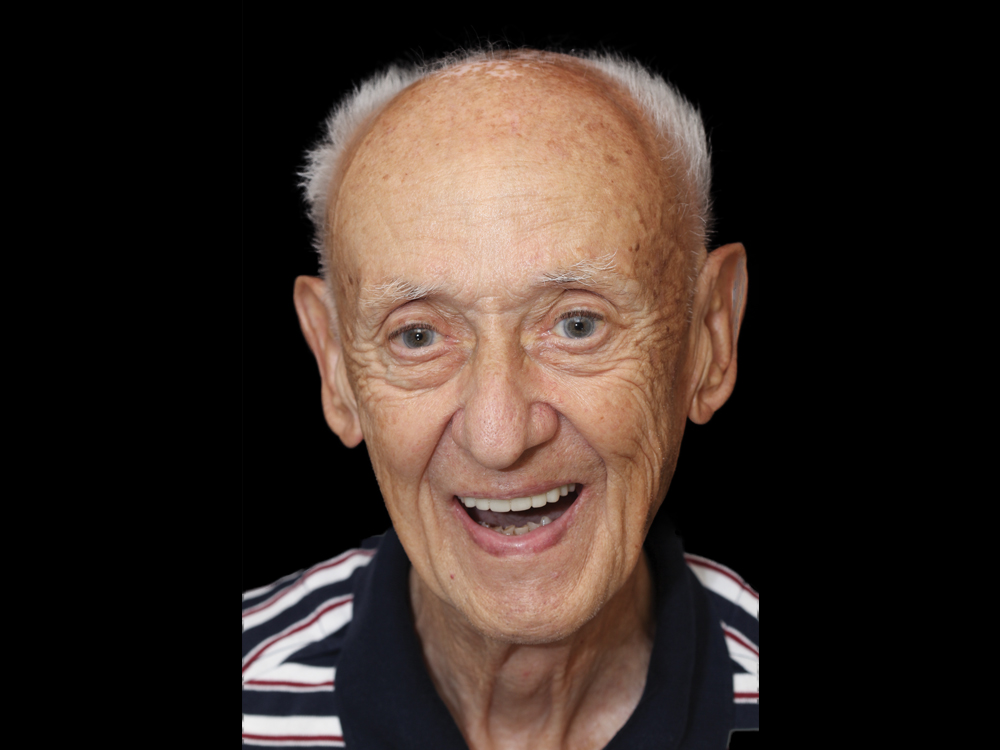
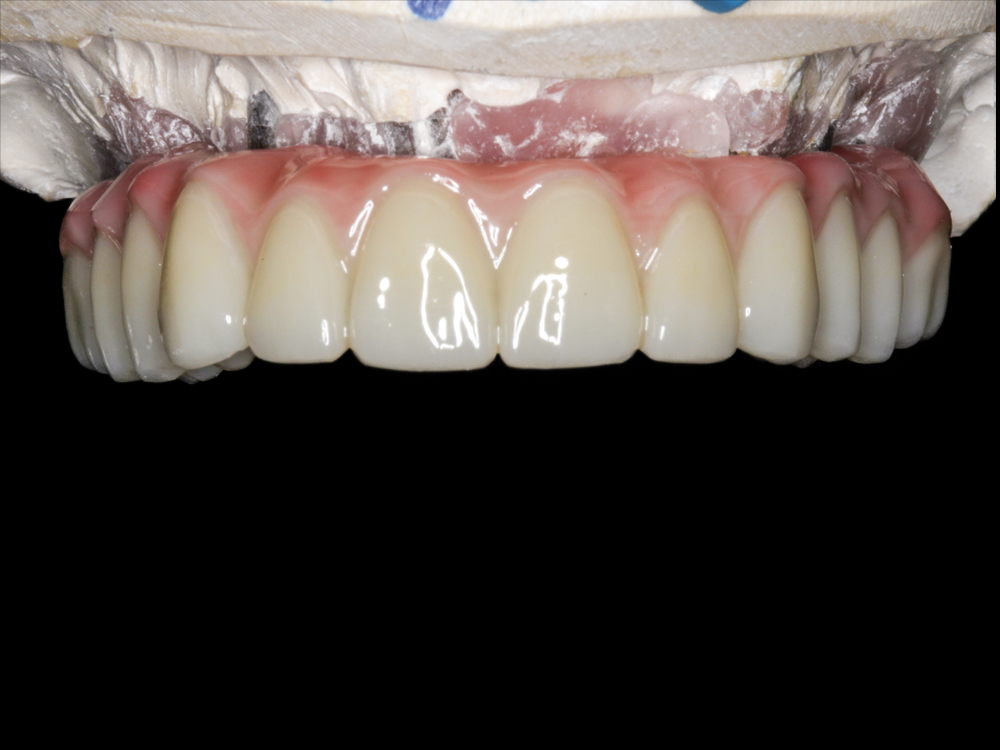
Dr. Nosti recently completed his first full-arch implant case, placing seven implants for a patient who was unhappy with a denture he had received several months prior, which made it nearly impossible to play his trombone. After placing the Hahn implants through a surgical guide and allowing the sites to heal, Dr. Nosti restored the implants with a BruxZir Implant Prosthesis, fully restoring function and allowing the patient to resume his life as a musician.
CM: Are there still certain cases that you refer out to specialists?
JN: Definitely. For example, there are cases where the patient requires extensive sinus grafting or a block graft in their mandible. I still use a team approach with my periodontist if it’s an esthetically demanding single-unit case in the anterior, where I get the patient on board, he does the surgery, and then I do my part in giving that patient an outstanding esthetic result.
CM: You’ve talked about your experience as a student at the Misch Institute, but how did you end up recently becoming an instructor there?
JN: Dr. Randolph Resnik, who currently serves as the institute’s director and primary lecturer, approached me and asked if I’d like to be an instructor for the prosthetic continuum. I have a lot of experience teaching for the Clinical Mastery Series, where I serve as clinical director. Randy remembered me from back when I took the prosthetic continuum and saw how I went on to become heavily involved with education. I think he was primarily interested in my knowledge of occlusion and prosthetics, which are areas I’ve focused on in the Clinical Mastery Series. During the surgical continuum, there were times when Randy would direct questions about occlusion, taking a bite registration, increasing vertical dimension, and other restorative procedures to me, in order to keep the surgery content on track. I enjoyed the interaction at these courses, and I was happy to help everyone out. Randy invited me after I completed the surgical continuum, and I’m truly honored to be a part of the Misch Institute and help carry on the legacy that Carl and Randy have built. I will be present at other surgery courses as an adjunct faculty, but my main focus will involve the prosthetic element of the courses.
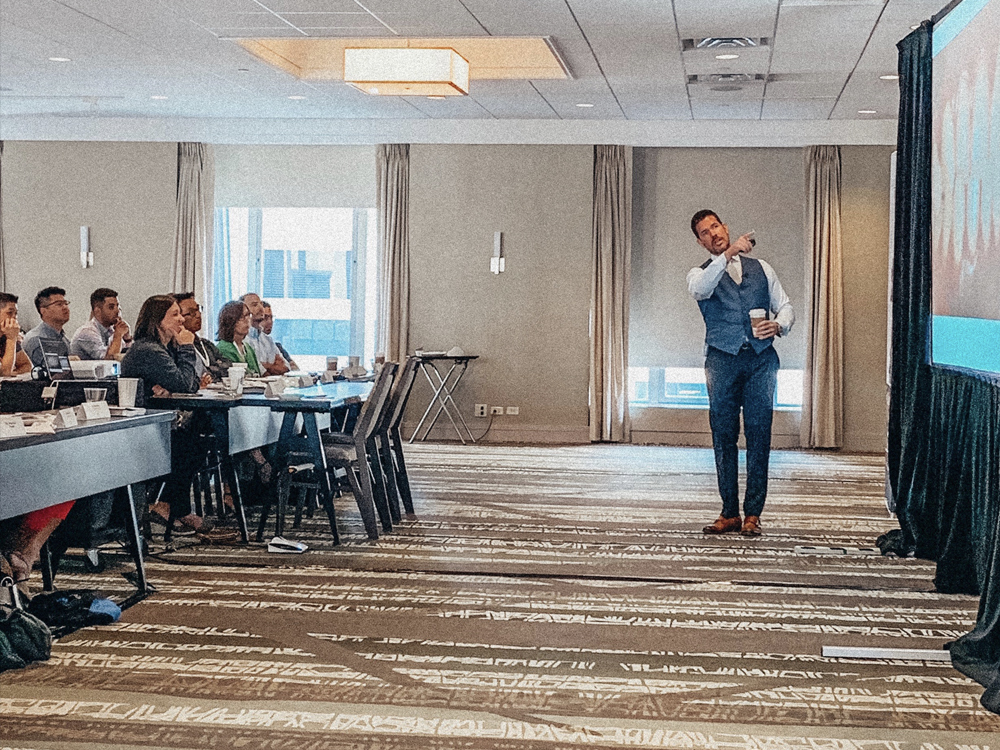
After Dr. Nosti completed the surgical continuum at the Misch International Implant Institute, Dr. Randolph Rensik, the institute’s director and primary lecturer, invited him to teach on the prosthetic aspects of implant dentistry.
CM: How does the Clinical Mastery Series compare with the Misch contiuum?
JN: The Clinical Mastery Series is a continuum geared toward teaching doctors to advance their knowledge in comprehensive dentistry, occlusion, and cosmetic and reconstructive procedures. We dive into a wide range of topics, such as when and why to use “CR (centric relation) dentistry,” how to change vertical dimension of occlusion, prep design for veneers and other all-ceramic cases, material selection, and how to perform a new patient exam — to name just a few. At the most upper level courses, there’s discussion on implants and implant prosthetics, but there is no education on the surgical aspect, which is why my roles at Clinical Mastery Series and the Misch Institute complement each other so well. There’s a great synergy.
CM: Can you speak to how embracing implants has affected your practice and the care you provide patients?
JN: It’s funny for me to say that, at 22 years into my career, I didn’t realize how big of a game changer it would be for my practice. It’s been absolutely amazing. Just being able to talk to patients and tell them that all of their care can be handled under one roof has transformed my practice.
Now that we can tell patients that we can handle it here in the practice, most patients are eager to move forward with treatment. It’s: “Oh, you can do this now? That’s great! When can we get started?” So being able to offer that service to my patients, who trust me and know that I’m capable of providing them the care or I wouldn’t offer it to them, has been great for them as well as my practice. It’s convinced a lot of patients who’ve been on the fence, even though they wanted the implant, into accepting treatment. And then there’s new patients I’m meeting who have been to my website or seen the marketing pieces we’ve put out. They’ve seen the smiles we create and the testimonials from other patients, and they come to the practice because it’s all done in my office. I don’t see the look of disappointment anymore when I tell them that they have to go somewhere else to get the implants placed.
CM: For other dentists out there who are thinking of learning to place implants, how would you recommend that they get started?
JN: I strongly recommend that anyone who’s interested in placing implants take the Misch continuum. Just in the first session alone, you learn enough about extracting and grafting to bring that back to your practice and add it to the services you offer. Being able to perform predictable bone grafting procedures for your patients can add enough revenue to your practice to pay for the entire continuum. And that’s before implant placement even enters the picture. From an educational aspect, everyone knows Dr. Carl Misch’s legacy and the wealth of knowledge that comes from the history of the Misch Institute. Dr. Randy Resnik is doing a phenomenal job of continuing that legacy and I’m just honored to be a part of it now.
CM: Beyond education, do you have any general advice for dentists who are considering adding implant placement to their practices?
JN: What I would like people to understand is that when you look at implantology in the dental field, it now represents around 25% of the business. A question that dentists really need to ask themselves is: Why leave 25% of the business off the table? Doctors really owe it to themselves to look into that and have that be a part of their practice. More patients will be able to receive the best treatment for missing teeth. They’ll be able to chew food easier, smile with more confidence, and enjoy all of the life improvements that implants bring. And that’s amazing because, don’t we all want to better our patients’ lives?
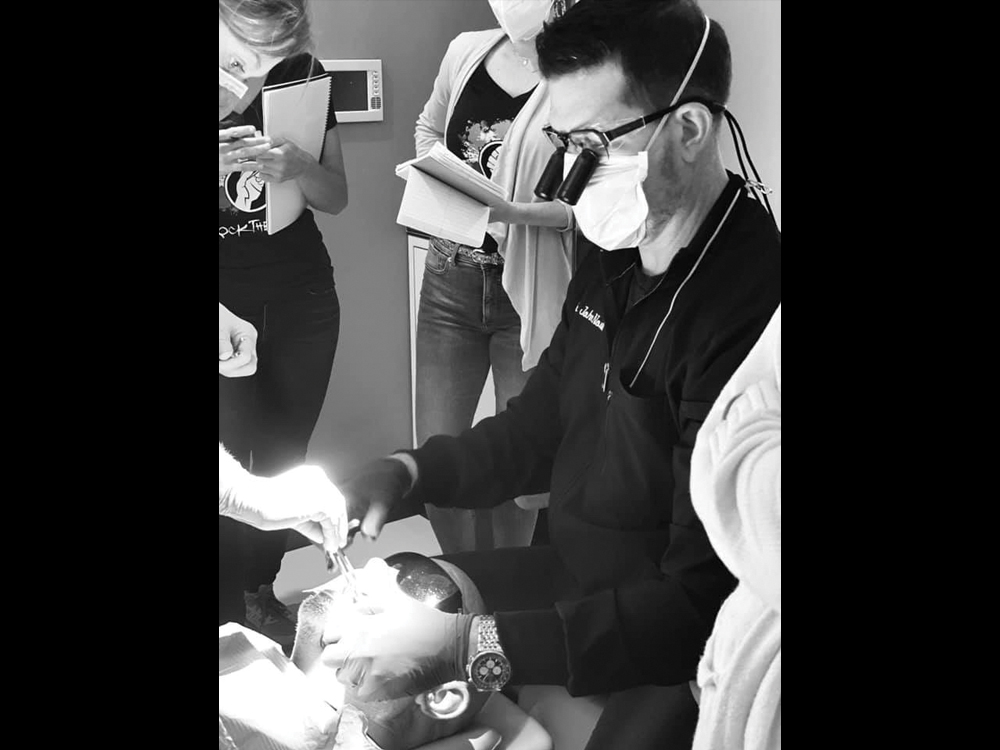
As clinical director of the Clinical Mastery Series, Dr. Nosti oversees a continuum that helps clinicians gain a command of the finer points of dentistry, from occlusion, to cosmetic procedures, to full-mouth reconstruction.

